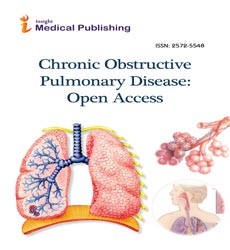Monitored Anesthesia Care vs. General Anesthesia for Trans CatheterAortic Valve Implantation (TAVI): Our Initial Experience
Satish Kumar Mishra
Department of Cardiothoracic Anesthesia, Military Hospital (CTC), India
Received Date: 2022-01-02 | Accepted Date: 2022-02-11 | Published Date: 2022-01-31Satish Kumar Mishra
Department of Cardiothoracic Anesthesia, Military Hospital (CTC), Pune, India
Received date: 2022-01-02 | Accepted date: 2022-01-11 | Published date: 2022-01-31
Abstract
Background: The game changer in the field of treatment for Aortic Stenosis in patients with high operative risk for surgical aortic valve replacement is Trans catheter Aortic Valve Implantation (TAVI). Most TAVI have been done under General Anesthesia (GA) with Trans Esophageal Echocardiography (TEE). GA in this patient group is hazardous and is associated with significant complications. The aim of the present study was to study and compare the outcome of patients among those who underwent TAVI with general anesthesia against those who underwent TAVI with Monitored Anesthesia Care (MAC). Materials and methods: After institutional ethics committee approval and obtaining written informed consent, 31 patients undergoing Trans catheter aortic valve implantation (TAVI) were registered. First 21 (n=21) (Group A) patients who underwent TAVI at our center received general anesthesia. Subsequent 10 (n=10) (Group B) patients who were scheduled for the procedure received sedation with dexmitidomidine. Patient selection for TAVI was based on various risk calculators which attempts to ascertain surgical risks. The study was carried out at a tertiary care hospital in western Maharashtra between November 2017 and March 2019. Results: No statistically significant difference regarding pre-operative patient characteristics, comorbidity and procedural characteristics. i.e the duration of procedure, stay in ICU, days to discharge from procedure and duration of stay in hospital. However there are trends in favor of monitored anesthesia case in terms of reduction in procedural time and hospital stay. Conclusion: TAVI can be performed in majority of cases, under dexmitidomidine based sedation. Our initial experience suggests that this should result in a shorter implant procedure time, reduced stay in intensive care unit and shorter time to hospital discharge.
Open Access Journals
- Aquaculture & Veterinary Science
- Chemistry & Chemical Sciences
- Clinical Sciences
- Engineering
- General Science
- Genetics & Molecular Biology
- Health Care & Nursing
- Immunology & Microbiology
- Materials Science
- Mathematics & Physics
- Medical Sciences
- Neurology & Psychiatry
- Oncology & Cancer Science
- Pharmaceutical Sciences
